The board at a glance
Aorus (Gigabyte) has adapted the board design a little to the new radiator philosophy and you can see that at first glance. Cleaned up, it's different, but a lot of things, like the coils, the SMD caps and the VRM, are nicely arranged in rows and exactly among each other. We can see why this is the case in the cooler analysis.
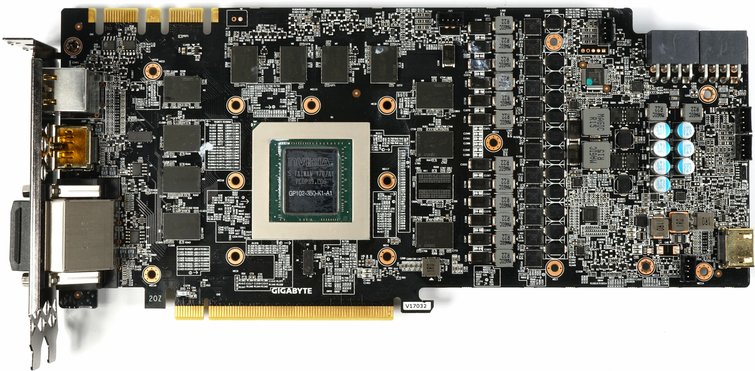
For example, the GPU uses a total of six real phases, for which one relies on an uP9511 uPI Semiconductor, which, including OpenVReg 4+, can realize everything the manufacturer and user so desire. With the uP9111, a special phase doubler and gate driver is used per phase, which controls the then a total of 12 control circuits. There are thus 12 individual voltage transformer circuits, two of which are controlled in parallel.
 |
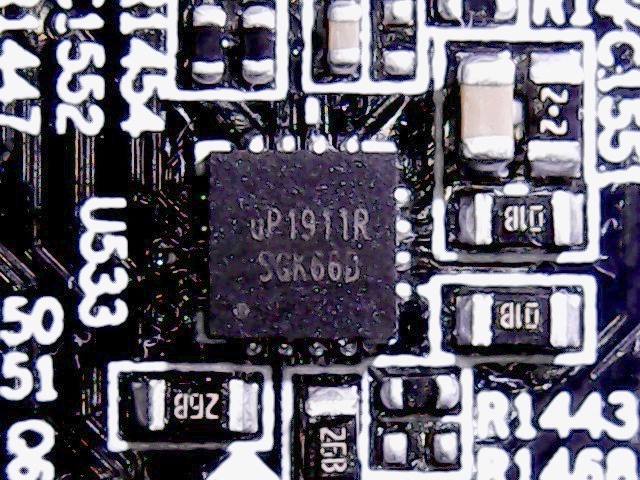 |
For these, a highly integrated power-stage chip FDMF6823C from Fairchild is used for the combination of the high- and low-side, which also includes the Schottky diode. Due to the linear arrangement on the board, a beautiful spatial division of the hotspots under the heat sink is possible. These 12 knob chips sit nicely with each other like chickens on a pole.
The polymer condensers, on the other hand, are a clever solution, which can only be recognized as such at second glance. This not only reduces the height, but also creates a flat surface that can also be used as a cooling surface. In order to achieve the necessary capacities and to make the same principle actively usable for the backplate (the distance is reduced once again and the pad thinner), the manufacturer puts a row on the back of the board once again.
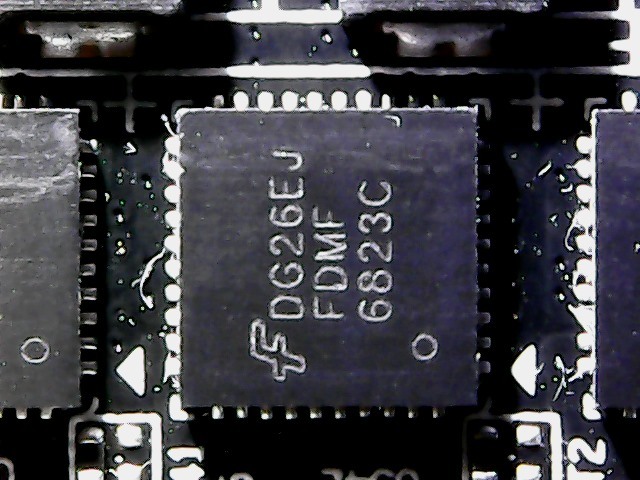 |
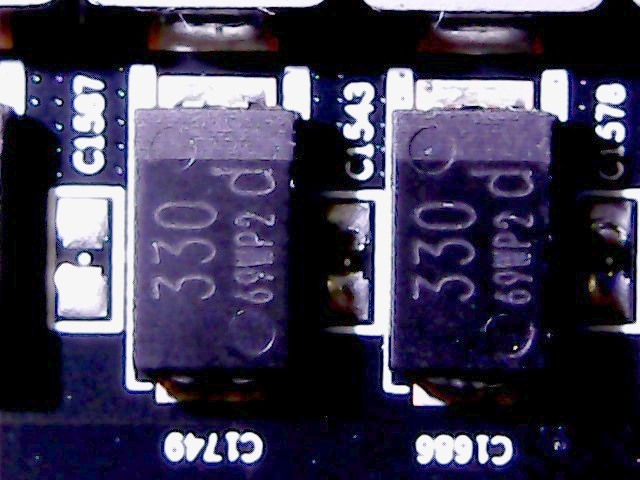 |
The coils, Magic Coils from Foxconn, are firmly shed ferrite core coils and do the whole task rather unspectacularly. But they also do not create a completely silent operation. They are used on the map in two different inductors and sizes.
A total of 11 of the new G5X-Micron modules of type MT58K256M321-Ja110, which offer up to 11 GByte/s and are therefore intended to compensate the missing 32 bits of the memory interface with a higher clock speed of 5500 MHz (effectively), are installed on this card. We are somewhat surprised that Nvidia didn't install the MT58K256M321-Ja120, which clocks a little higher. But one is probably afraid of a thermal problem of the storage tank operated with up to 1.35 volts, which in both cases may get hot up to a maximum of 95°C. And since Nvidia always delivers GPU and memory in a bundle, Aorus has little room for its own ideas.
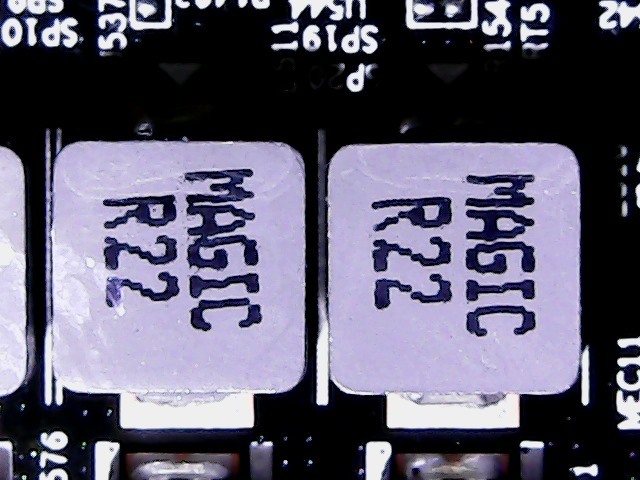 |
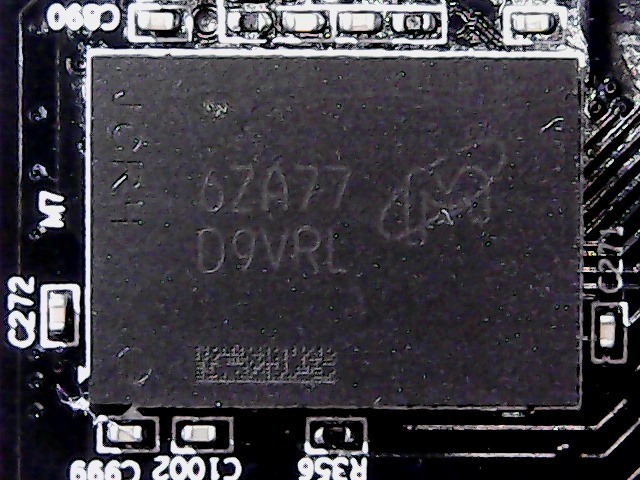 |
The power supply of the memory is somewhat spatially separated and is solved via an uP1666 from uPI Semiconductor, which can provide a total of two phases as a buck controller.
In contrast to GPU power, Aorus (gigabytes) uses two identical dual-N-channel MOSFET FDG33AJ from Fairchild per phase, covering both high and low-side. However, their cooling is not taken over with the specially developed VRM heat sink, but via a contact surface emanated from the curved slat bases of the cooler. Here, too, you cool VRM and the coils.
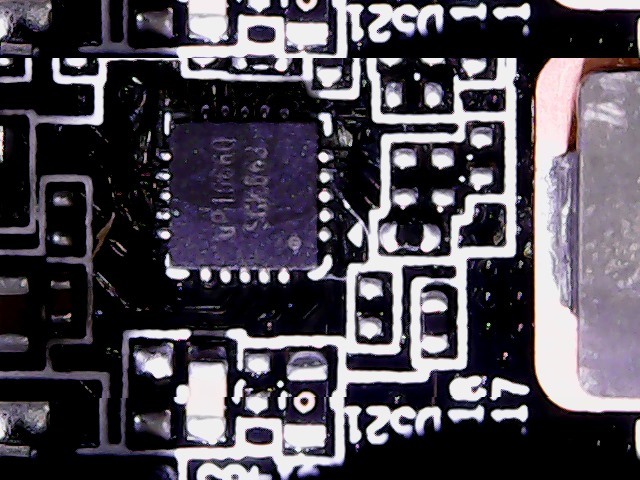 |
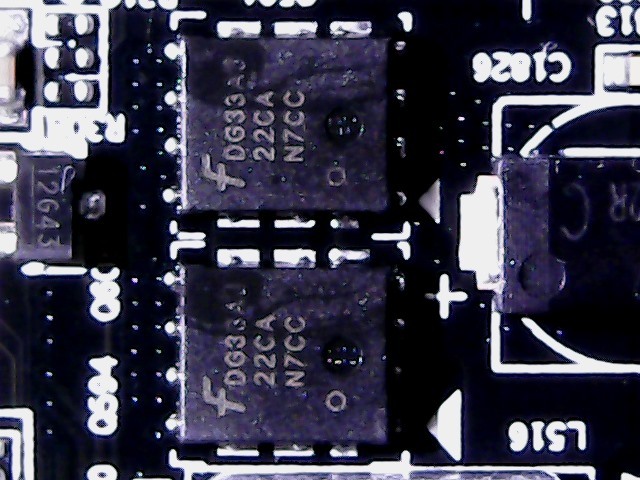 |
The usual INA3221 is a monitoring chip for flowing currents and voltages and in the end also protects the technology from overloads. What also caught our eye with the board was the 32-bit ARM Cortex M0+ processor from Holtek, which Gigabyte uses only for controlling the RGB effects.
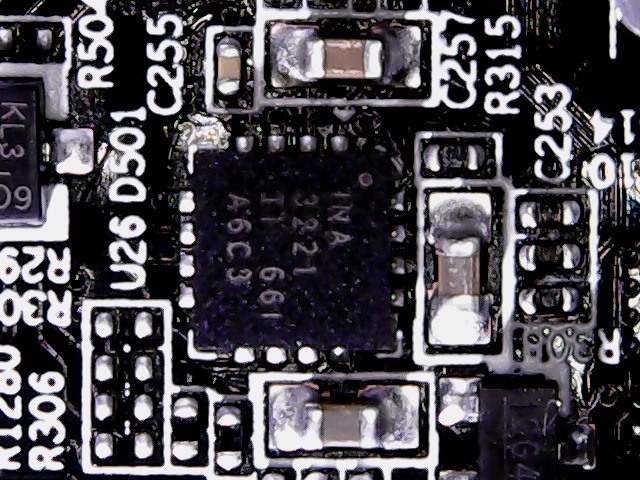 |
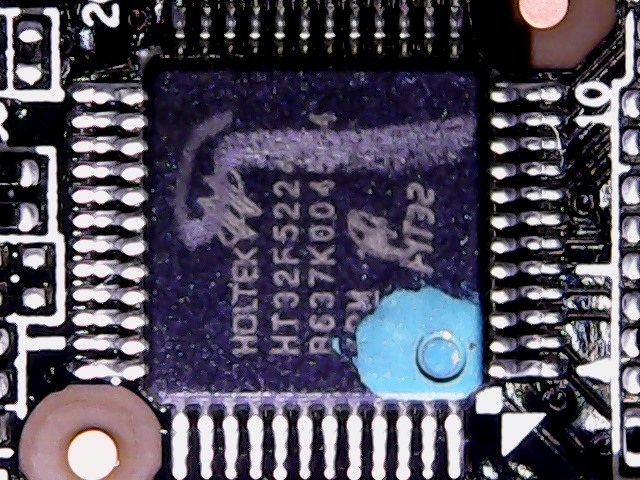 |
With a total of two PI3WVR12412, a 4-line DisplayPort and HDMI video switch from PERICOM, the graphical output of the external and internal connection is traded.
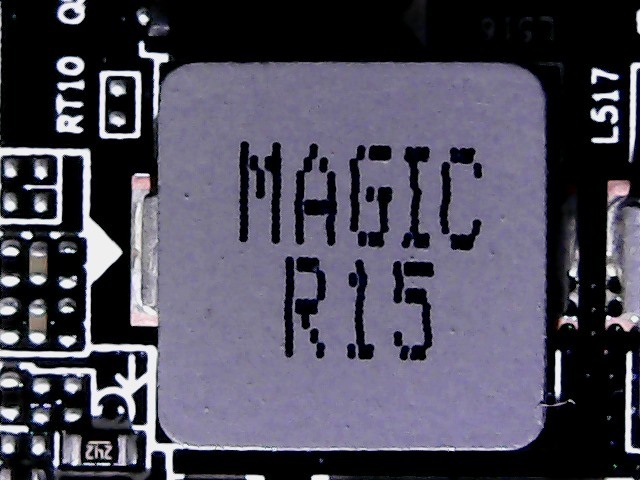 |
 |
The back shows once again the linear arrangement of the components among each other and the surfaces that could be used for a backplate cooling. That is what we are now coming to.
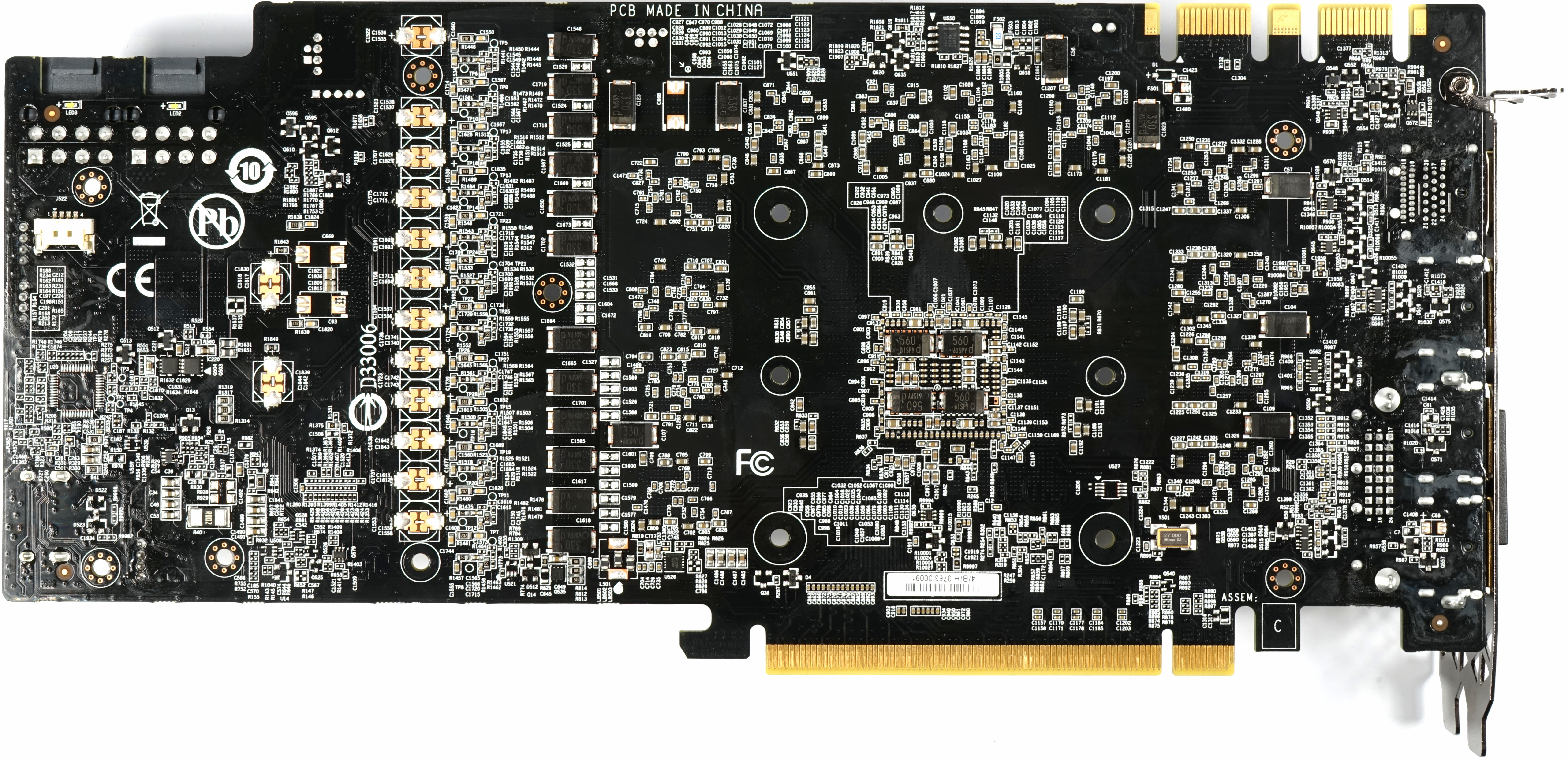 Cooling concept and implementation
Cooling concept and implementation
The used backplate without internally glued film serves not only for the optics and stabilization of the radiator structure, but also for passive cooling, which we will see later in the infrared tests. In addition, a light guide film illuminated with an RGB diode has been glued together, which is supposed to stage the Aorus logo. Where the GPU sits, there is a recess that we have to write about right away.
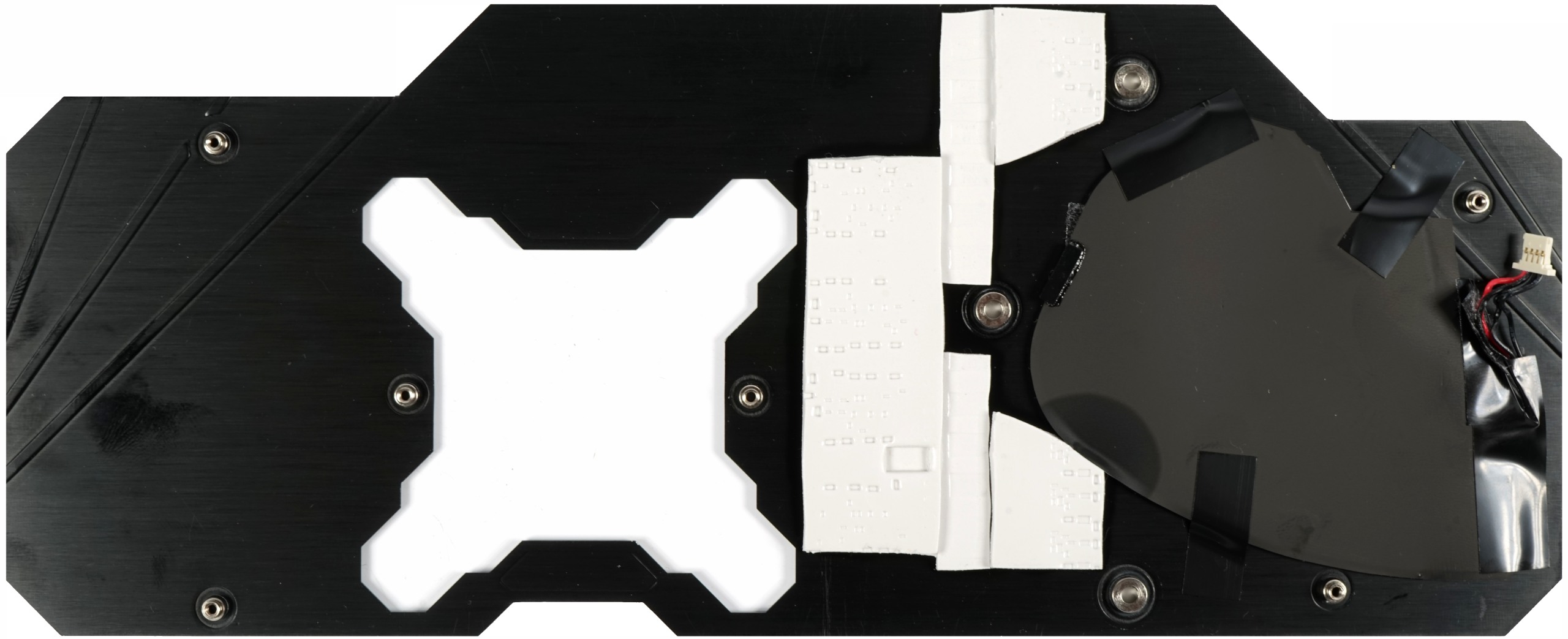
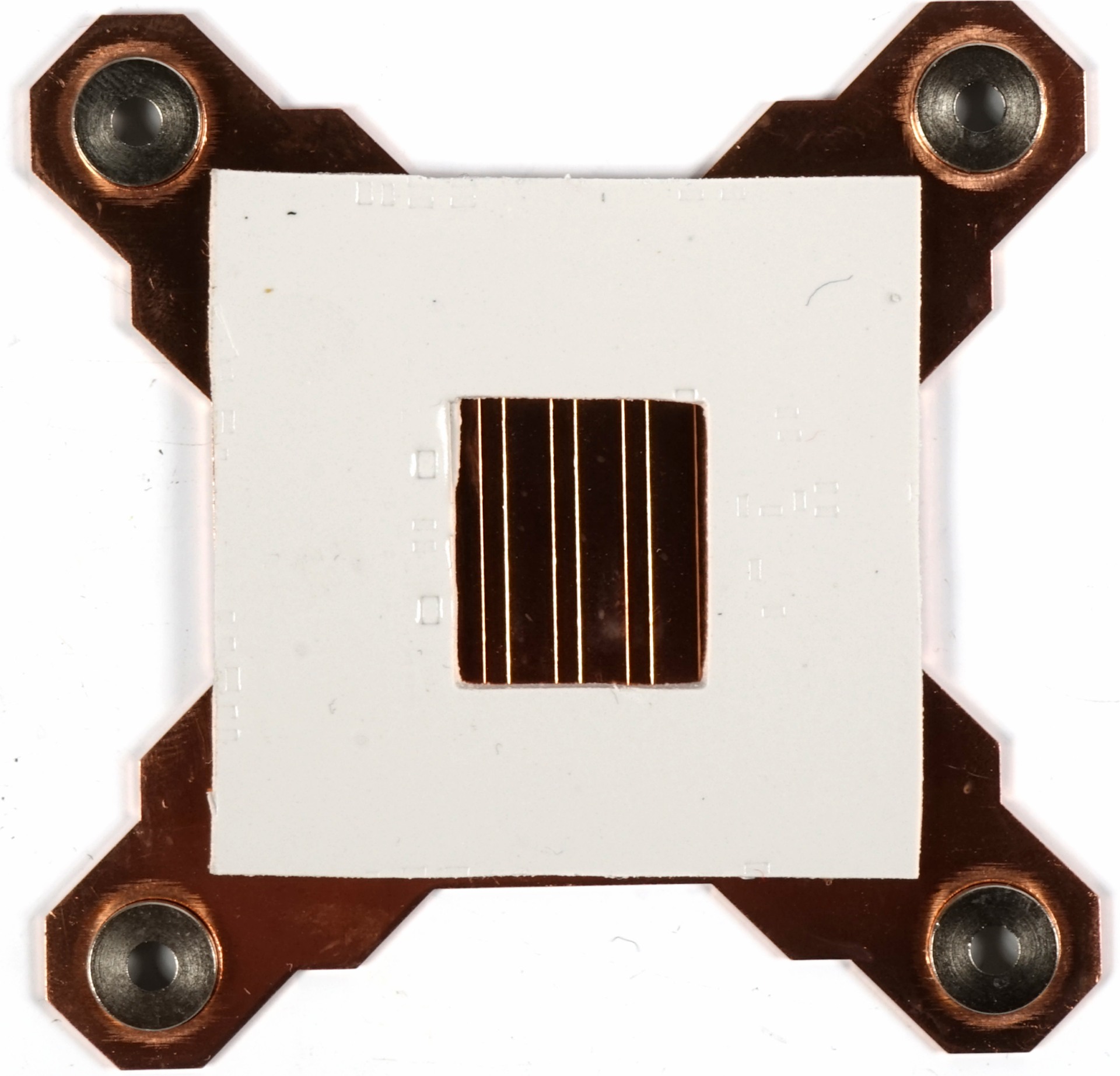
This opening is reserved for a small copper plate that sits under the GPU at the back, is also equipped with a thermal pad and is screwed to the front together with the GPU's radiator heat sink.
Unfortunately, the PR slides are somewhat misleading, because this piece of metal has been deliberately omitted from the backplate. The backplate will get hot up to 80°C over time over the connected components, as we will see later, while the GPU stays much cooler!
That is why a thermal separation has been carried out here. This disk does not cool (though spectacularly) the GPU, but only the GPU socket. Here, enough waste heat arrives from the direction of VR, which is fed via the copper to the voltage supply within the multilayer board.
So it's nothing more than a kind of 2-zone air conditioning system for the GPU, but it's probably too complicated to sell that as PR properly. But it works, so much has been spoiled here in advance.
The cooler itself is a real block. It is divided into two parts, which is not a bad idea in terms of turbulence. The massive copper heat sink feeds a total of five 8 mm heat and a slightly hidden 6 mm heatpipe made of composite material with THE GPU waste heat.
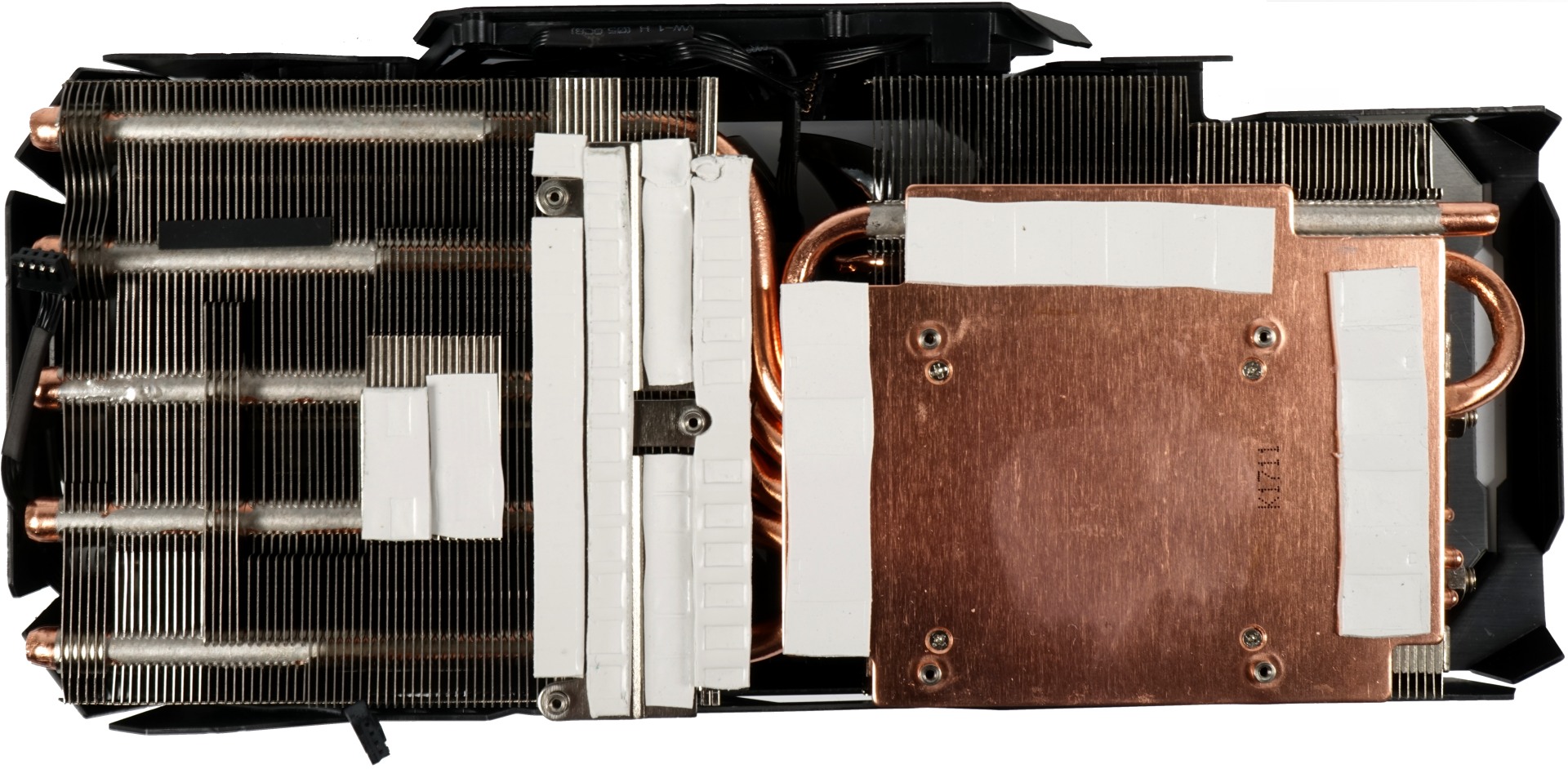
The VRM heat sink cools the MOSFETS, as well as the coils and polymer SMD caps. A graduated solution that has been implemented in a truly exemplary way:

The massive copper heat sink for the GPU is also convincing, because the memory modules are actively cooled immediately via this solution, also called "base plate", which is connected to the heatpipes. Gigabyte has also been on the safe side, as it used to be with some Windforce coolers, and uses massive threaded rods and nuts to hold and stabilize the massive part.
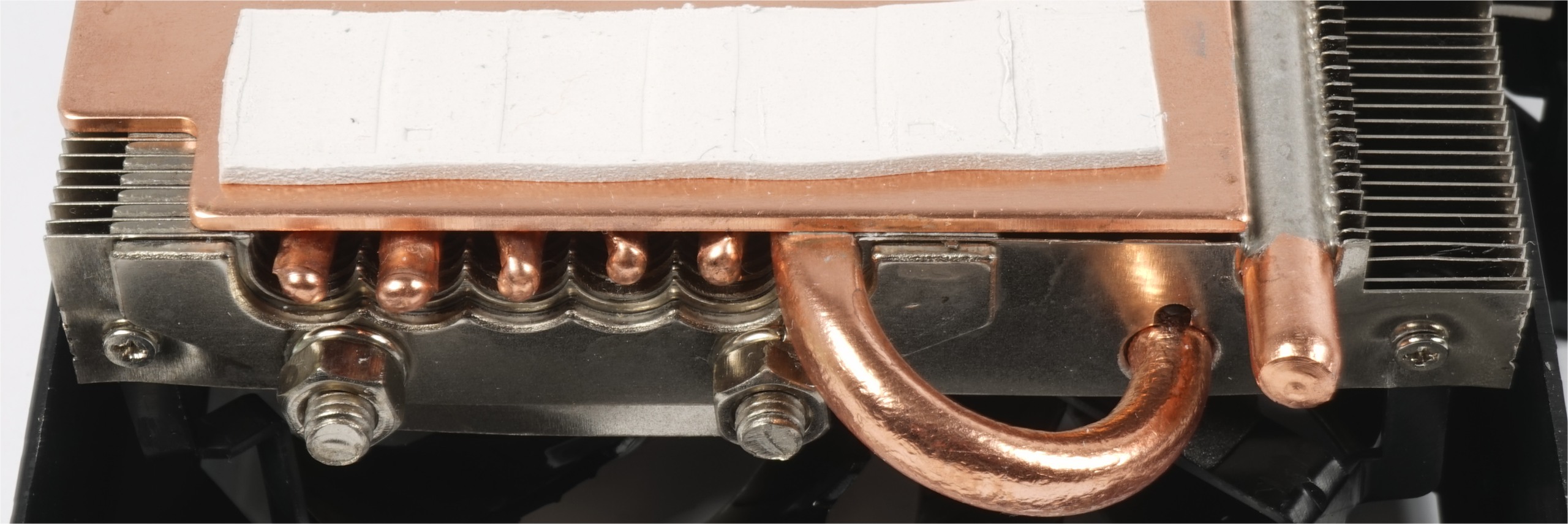
The three fans used and covered up somewhat ("stack fans") with a rotor diameter of almost 95 mm each are designed for throughput and vortex with their 11, medium-sized rotor blades per fan rather for throughput and vortex and not for pure static pressure. The fact that this concept can also work with the middle, counter-rotating fan has often been impressively proven in the past.
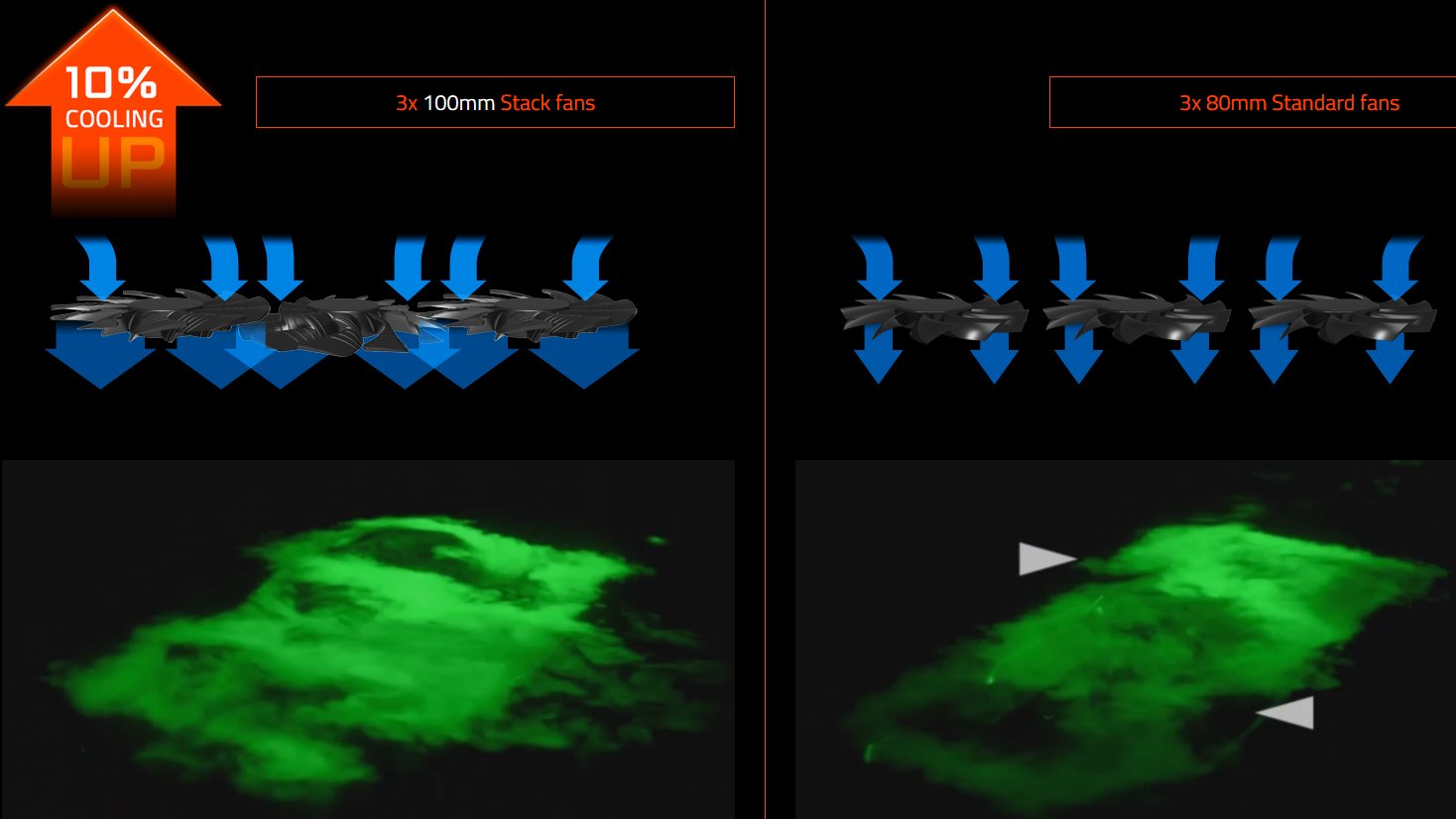


































Kommentieren